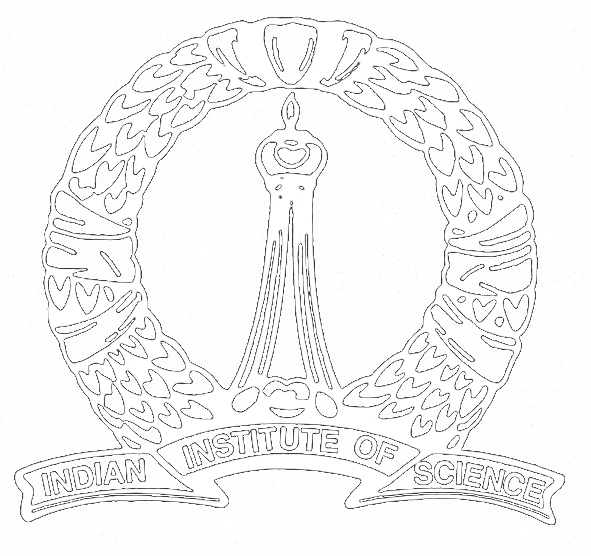An IISc NTU workshop will be held on the occasion of the visit of the NTU, Singapore, delegation to IISc on September 19, 2018. The schedule of the lectures is as below.
-
Speaker: Arvind Ayyer, Department of Mathematics, IISc
Time: 10.00 to 10.20 am
Title: The combinatorics of odd and chiral partitions
Abstract: We say that a partition is odd if its dimension (computed by the hook-length formula) is odd. It turns out that the number a(n) of odd partitions of a positive integer is always a power of 2. This was proven independently by Macdonald and McKay. We will show that the subposet of the Young lattice consisting of odd partitions is a binary tree, and give an explicit recursive characterisation of this tree.
We say that a partition is chiral if the associated irreducible representation composed with the determinant map gives the sign character. Denote the number of chiral partitions of n by b(n). L. Solomon first considered the problem of enumeration of b(n) and Stanley posed it as an open problem in his book. We solve this problem by giving an explicit formula for b(n). We also show that the enumerations of a(n) and b(n) are closely related. The primary tool in our solution is J. Olsson’s theory of core towers.
This is joint work with A. Prasad and S. Spallone.
-
Speaker: Frederique Oggier
Time: 10.20 to 10.40 am
Title: Facets of Algebraic Coding Theory
Abstract: I will briefly explain what algebraic coding theory is about, and exhibit connections to different areas of algebra/number theory such as finite fields (as is classically the case), group theory (finite groups), lattice theory (and modular forms), and central simple algebras (over number fields).
-
Speaker: Navin Kashyap, IISc
Time: 10.40 to 11.00 am
Title: Overview of research activities in coding theory at IISc
Abstract: We will give a brief and not-so-comprehensive overview of the research activities that are taking place at IISc, chiefly within the ECE Dept., in the broad area of coding theory.
-
Speaker: Nicolas Privault
Time: 11.00 to 11.20 am
Title: Normal approximation for sums of discrete U-statistics, with application to Kolmogorov bounds in random subgraph counting.
Abstract: We derive normal approximation bounds in the Kolmogorov distance for sums of discrete multiple integrals and U-statistics made of independent Bernoulli random variables. Such bounds are applied to normal approximation for renormalized subgraphs counts in the Erdős-Rényi random graph. This approach recovers recent results obtained for triangles and extends them to the general setting of arbitrary graphs, while improving other bounds derived in the Wasserstein distance.
-
Speaker: Vijay Natarajan, Computer Science and Automation, IISc
Time: 11.20 to 11.40 am
Title: Topological Feature-Directed Visualization
Abstract: Scientific phenomena are often studied through collections of related scalar fields generated from different observations of the same phenomenon. Exploration of such data requires a robust distance measure to compare scalar fields for tasks such as identifying key events and establishing correspondence between features within a data set and across data sets. In this talk, I will first introduce the problem of symmetry detection in scientific data and its role in the design of feature-directed visualization methods. The goal is to identify regions of interest within the domain of a scalar field that remain invariant under transformations of both domain geometry and the scalar values. The problem generalises to similarity identification when applied to time-varying and multi-field data. I will present algorithms to detect symmetry and similarity and discuss applications to visualization, interactive exploration, and visual analysis of large and feature-rich scientific data. [http://vgl.csa.iisc.ac.in]
-
Speaker: Xia Kelin
Time: 11.40 am to 12.00 pm
Title: Topological modeling and analysis of big data in biomolecules
Abstract: The availability of gigantic structure and gene data in various databanks has brought a great opportunity for researchers to quantitatively understand the biomolecular structure, dynamics and functions. In this presentation, we discuss the application of topological data analysis (TDA) in biomolecular data analysis. We introduce molecular topological fingerprints (MTFs) for biomolecular structure characterization. MTFs are derived from the persistent homology analysis and provide a unique representation that balances the topological simplification and geometric details. Multidimensional persistent homology is proposed and further used to quantitatively predict the stability of protein folding configurations generated by steered molecular dynamics. An excellent consistence between my persistent homology prediction and molecular dynamics simulation is found. Further, multiresolution persistent homology is proposed to handle extremely large biomolecular data. The essential idea is to match the resolution with the scale of interest so as to represent large scale datasets with appropriate resolution. By appropriately tuning the resolution of a density function, we are able to focus the topological lens on the scale of interest. The proposed multiresolution topological method has potential applications in arbitrary data sets, such as social networks, biological networks and graphs. Moreover, we offer persistent homology based new strategies for topological denoising and for resolving ill-posed inverse problems in Cryo-EM data. Finally, the recent progress in the topology based drug design has been briefly discussed.
